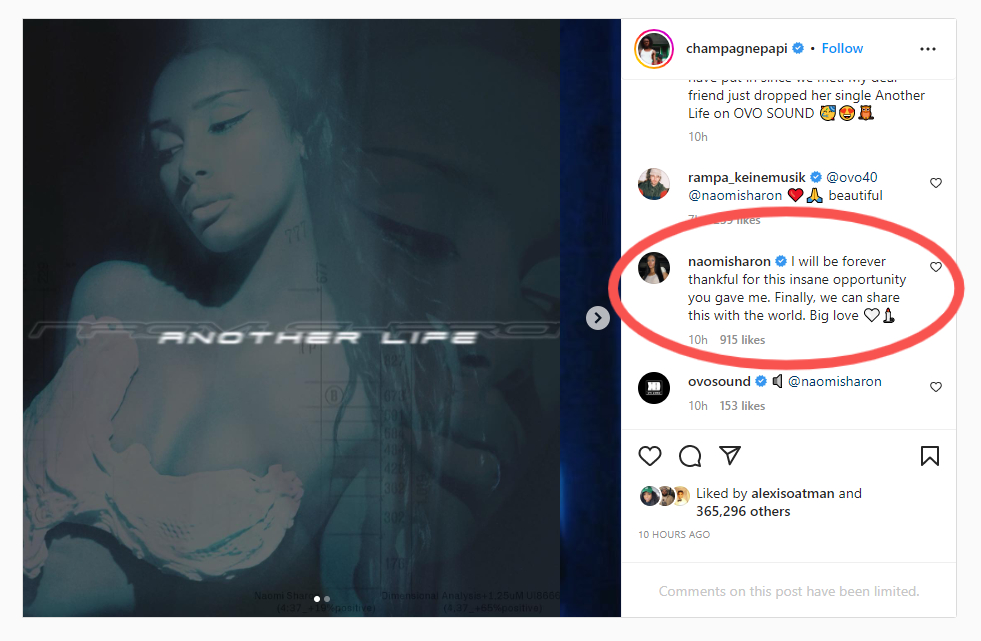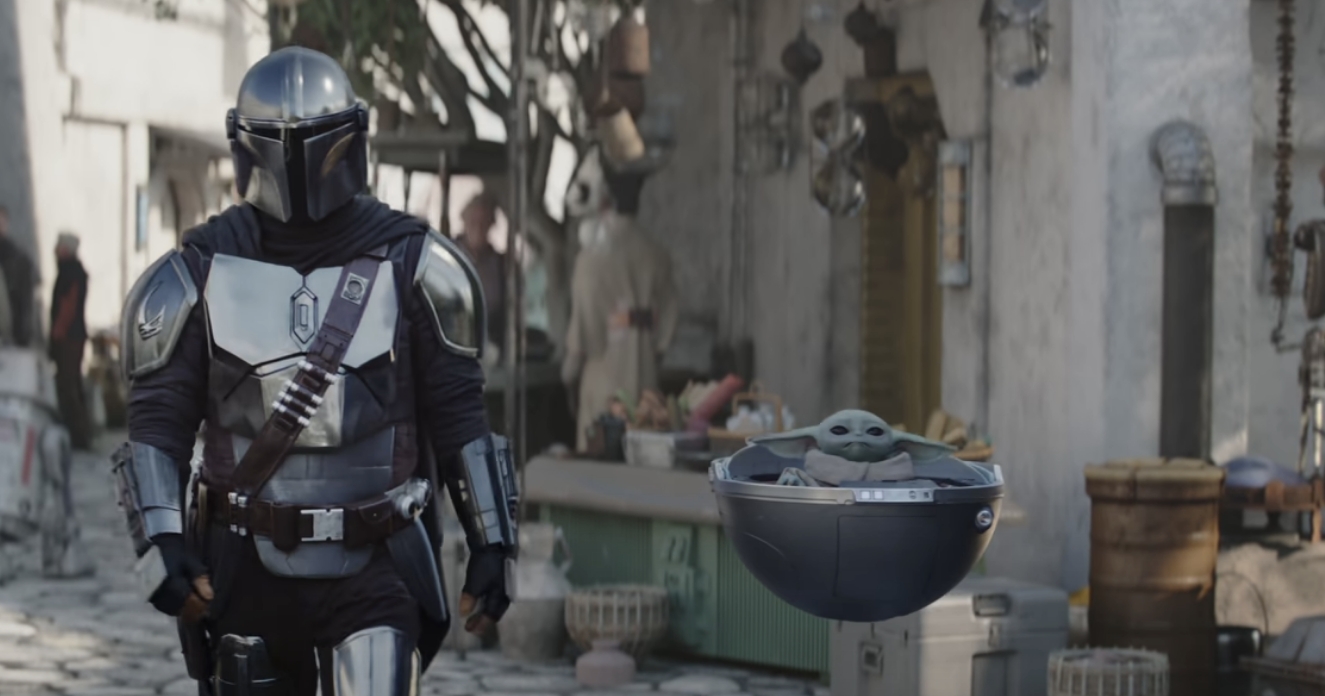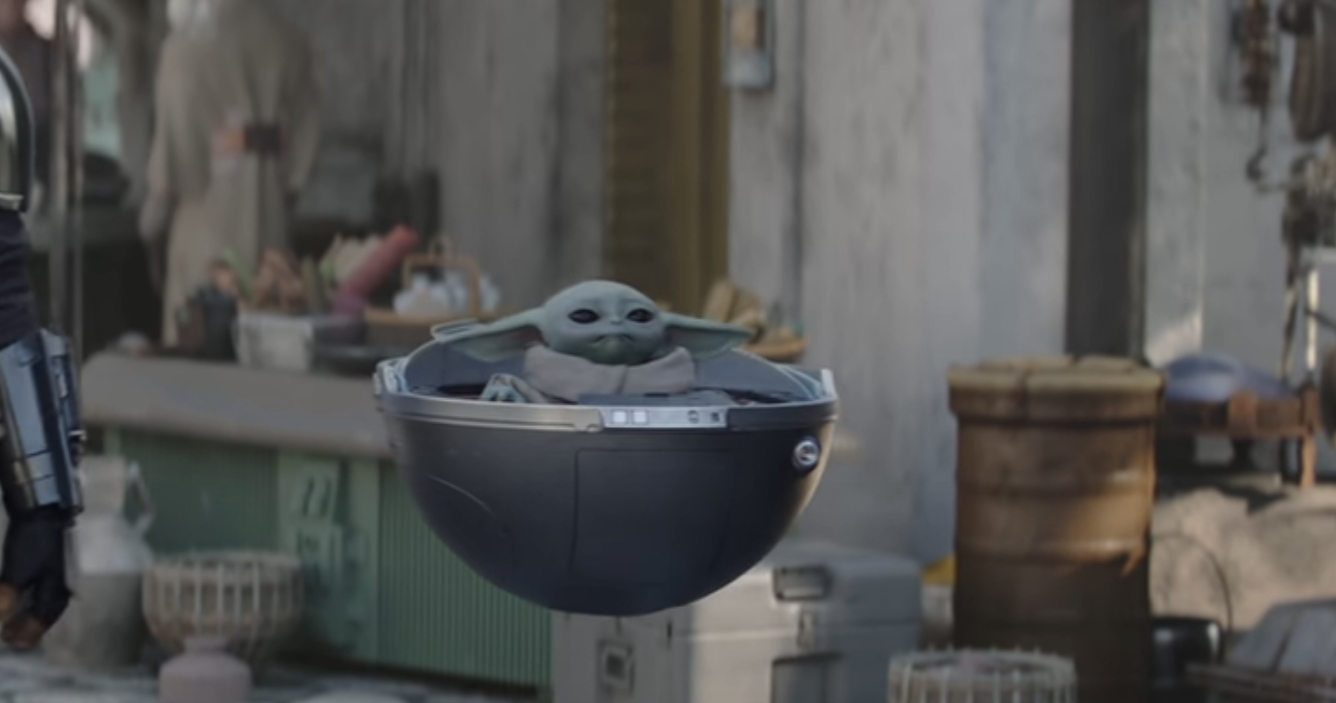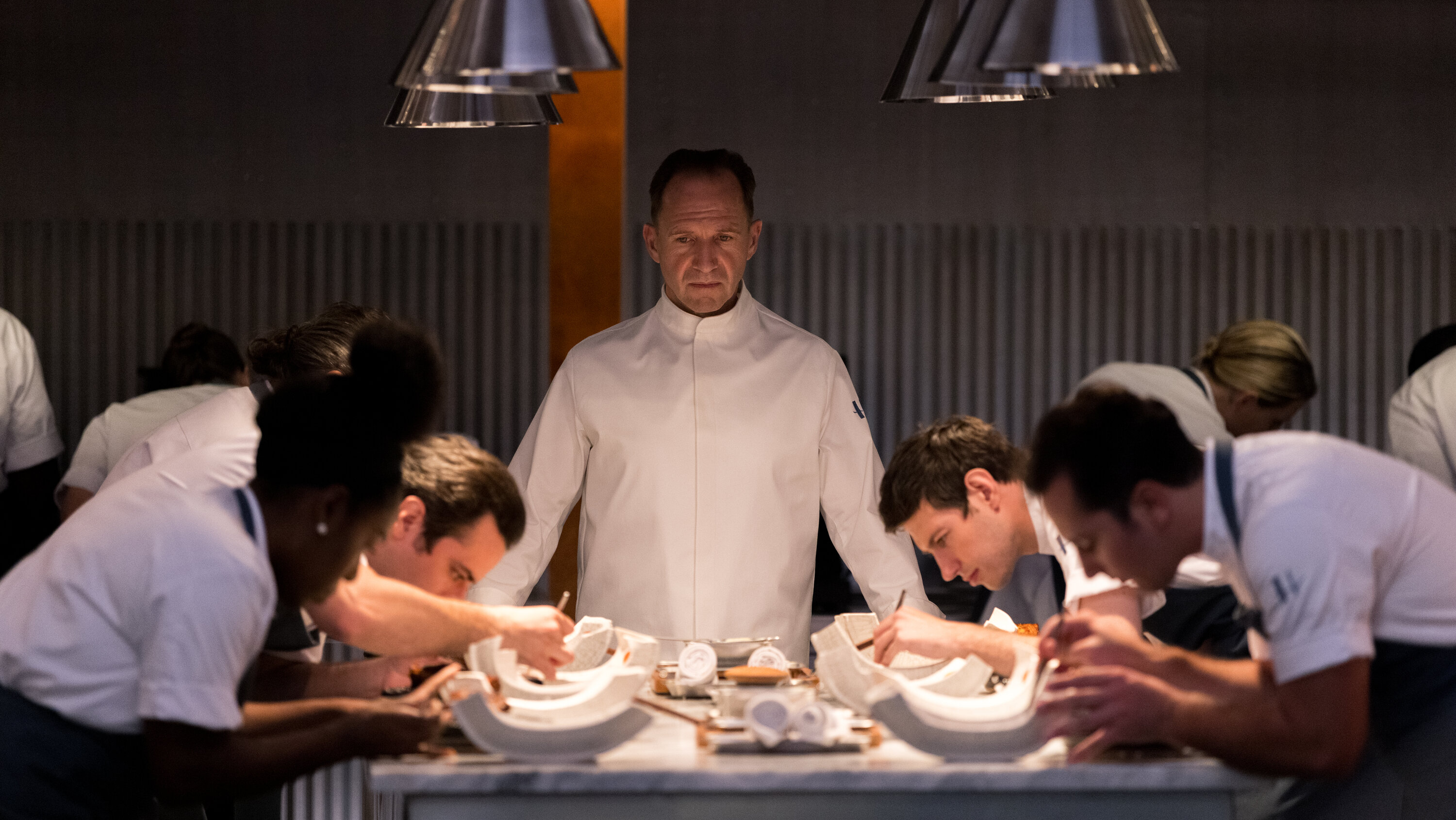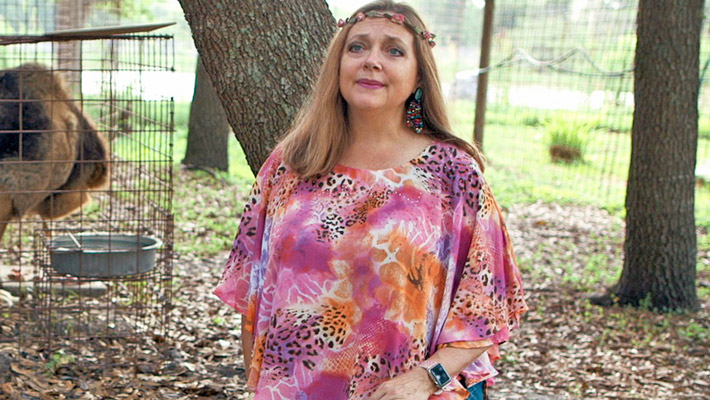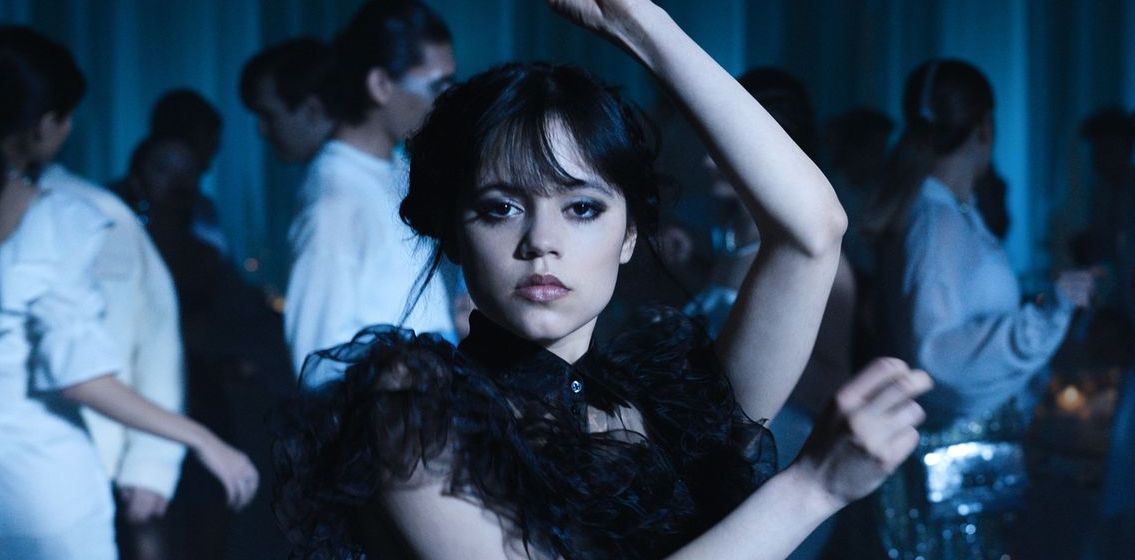Netflix changed the game when they shifted from mailing something called “DVDs” to sending the shows straight to our TV back in 2007. They changed it again when they made it clear that they weren’t content to stream other production companies’ movies and TV series — aiming a moonshot at making their own original programming in the hopes that they’d become a dominant studio as well as the spot where you can binge old episodes of Frasier. Make their mark, they did. Within only a few years, they became a powerhouse of original programming, due to a massive budget and the ability to say yes to some unusual ideas.
Here are the 25 best Netflix original series you can watch right now.
25. You
Year: 2018-present
Cast: Penn Badgley, Elizabeth Lail, Zach Cherry, Shay Mitchell, Victoria Pedretti
Genre: Drama, Thriller
Rating: TV-MA
Runtime: Seasons 1-3: 30 episodes
Created By: Greg Berlanti, Sera Gamble
Trailer: Watch here
The hit show that dares to ask the question: “Is it okay for me to like this?” Based on Caroline Kepnes book series, the show stars Badgley as a handsome, charismatic stalker sometimes named Joe who…we’re supposed to root for? It’s gross and manipulative and so, so, so compelling. It’s Talented Mr. Ripley run through the romance ringer where the narrator’s voice in our heads is the man of many names who should really be in prison. The magic of the series is in watching this American psycho get away with following his worst impulses while surrounded by an enthusiastic cast of characters (some of whom are just as bad as he is). The fourth season lands February 9th, and it very well could run as long as “Joe” can. Even then, jail probably wouldn’t put an end to the show’s potential.
Watch it on Netflix
24. Santa Clarita Diet
Year: 2017-2019
Cast: Drew Barrymore, Timothy Olyphant, Liv Hewson, Skyler Gisondo
Genre: Horror, Comedy
Rating: TV-MA
Runtime: Seasons 1-3: 30 episodes
Created By: Victor Fresco
Trailer: Watch here
When Sheila Hammond turns into a zombie, she and her family have to figure out how to transition into a slightly more murdery lifestyle. A girl’s gotta eat, right? But beyond the inconvenience of regularly scheduled killings, the biggest change is that Sheila has almost zero impulse control. Great for parallel parking confidence, but bad for just, you know, general living in society type stuff. There’s probably a version of this show that’s gritty and surreal and dominating an alternate universe HBO, but Fresco and the team decided to go super goofy with it, establishing a hilarious series where Drew Barrymore and Timothy Olyphant can smile their way through it all, no matter how much blood is on their business casualwear.
Watch it on Netflix
23. Unbelievable
Year: 2019
Cast: Toni Collette, Merritt Wever, Kaitlyn Dever
Genre: Drama, True Crime
Rating: TV-MA
Runtime: Seasons 1: 8 episodes
Created By: Susannah Grant, Ayelet Waldman, Michael Chabon
Trailer: Watch here
A young girl reports her rape to the police, the cops handwave it, and then charge her with lying. Then the details start to line up with a series of other rapes spanning from Colorado to Washington state. Based on a true story and anchored by chilling performances, this knockout series is a chronicle of bad police work, insulting police work, and then heroic police work in service of solving heinous crimes. Dever is phenomenal here as the young woman publicly branded a liar while her rapist stays at large, and the tag team of Collete and Wever is a potent force that showcases how much the well-intentioned have to swim upstream against an uncaring system.
Watch it on Netflix
22. The Umbrella Academy
Year: 2019-present
Cast: Elliot Page, Tom Hopper, Emmy Raver-Lampman, David Castañeda, Robert Sheehan, Aidan Gallagher
Genre: Action, Drama, Superhero, Sci-Fi
Rating: TV-MA
Runtime: Seasons 1-3: 30 episodes
Created By: Steve Blackman
Trailer: Watch here
The adaptation of the bombastic comic book from Gerard Way (yes, the dude from My Chemical Romance) and Gabriel Ba continues to unfold in bizarre and fantastical ways. It features a dysfunctional team of supers who were all born of a confounding event wherein 43 women all gave birth at the same time on the same day even though none of them were pregnant. What’s the right response? If you’re eccentric billionaire Sir Reginald Hargreeves, you adopt a bunch and see what weird powers emerge. It often follows traditional superhero storytelling with villains, fights, and the combination of cool powers, but it’s consistently transgressive in vibrant, colorful divergences from the tropes that have been burned into our brains by Marvel.
Watch it on Netflix
21. Lupin
Year: 2021-present
Cast: Omar Sy, Ludivine Sagnier, Clotilde Hesme, Soufiane Guerrab
Genre: Mystery, Thriller, Crime
Rating: TV-MA
Runtime: Seasons 1: 10 episodes
Created By: George Kay, Francois Uzan
Trailer: Watch here
Slick, smart, twisty. This French riff on the iconic thief did most of its heavy lifting by casting Sy, who has perhaps never been in the Bond conversation because he’s too cool. In Lupin, he plays a second-generation Senegalese immigrant named Assane Diop who is gifted an Arsene Lupin book by his father — a humble man who is wrongly arrested for stealing a valuable diamond necklace, leading to his committing suicide in prison. The show weaves heists into an ongoing tale about Assane trying to get revenge while balancing his complicated personal life. With directors like Louis Leterrier behind the camera, the series is a fun crime spree with a lead worth cheering on.
Watch it on Netflix
20. The Dark Crystal: Age Of Resistance (RIP)
Year: 2019
Cast: Taron Egerton, Anya Taylor-Joy, Nathalie Emmanuel, Gugu Mbatha-Raw, Jason Isaacs, Simon Pegg, Benedict Wong, Mark Hamill
Genre: Fantasy
Rating: TV-PG
Runtime: Seasons 1: 10 episodes
Created By: Jeffrey Addiss, Will Matthews
Trailer: Watch here
Gone too soon, but nowhere near forgotten, the prequel to the Jim Henson movie that scarred every ’80s kid permanently was a triumph of puppetry and fantasy storytelling that was too excellent to survive the streaming jungles. The imagery of the planet Thra is astonishingly beautiful, and that world is filled with an imaginative journey offering us the origin of a conflict between the cruel and corrupt ruling Skesis and the other entities living under their thumb. Whereas the iconic first film was about fulfilling a prophecy, Age of Resistance is about a population waking up to the truth about the ruthlessness of those in power. Plus, that cast list is only about half of the notable names breathing life into these characters, and hearing Mark Hamill’s raspy take on skekTek is a true joy.
Watch it on Netflix
19. Godless
Year: 2017
Cast: Jack O’Connell, Michelle Dockery, Scoot McNairy, Merritt Wever, Thomas Brodie-Sangster, Kim Coates, Sam Waterston, Jeff Daniels
Genre: Western, Drama
Rating: TV-MA
Runtime: Seasons 1: 7 episodes
Created By: Scott Frank
Trailer: Watch here
We’re in a bit of a Western resurgence, and Godless is a major part of dusting off the old tropes. Released the same year as Frank’s Logan (or Western Wolverine), it takes the genre seriously even as it slyly reinvents the wagon wheel. O’Connell plays an outlaw on the run from his crime lord after stealing his loot, taking refuge in a town populated almost entirely by women following the horrific collapse of a mine that killed all the men. Life is nasty, brutish, and short, and now they’ve got a fugitive from a revenge-hungry bastard heading right for them. Every character could be described as not taking no guff from no one, and everyone in this murderer’s row cast understood the assignment. A stellar series where the premise is simple so that everything else can be complicated.
Watch it on Netflix
18. The Unbreakable Kimmy Schmidt
Year: 2015-2019
Cast: Ellie Kemper, Tituss Burgess, Carol Kane, Jane Krakowski, Daveed Diggs
Genre: Comedy
Rating: TV-MA
Runtime: Seasons 1-4: 52 episodes
Created By: Tina Fey, Robert Carlock
Trailer: Watch here
After 30 Rock, everyone wanted to know what Tina Fey and Robert Carlock would do next. Their follow-up concept couldn’t have been further from the sketch show writer’s room. It takes a world-class comedic brain trust to turn a childhood victim of kidnapping and sister wife brainwashing into belly laugh gold. Kimmy missed out on her youth, attacked by Reverend Richard Wayne Gary Wayne (Jon Hamm) and locked in a bomb shelter with several other women until they’re all rescued as adults. Now, she’s trying to adjust to the modern world with the curiosity and mind of a middle schooler. Fortunately, even though New York City is a hell of a town, she has human firework show Titus and cranky landlady Lillian to guide her toward independence.
Watch it on Netflix
17. Dark
Year: 2017-2020
Cast: Andreas Pietschmann, Maja Schone, Anne Ratte-Polle, Florian Panzer
Genre: Drama, Thriller, Mystery, Sci-Fi
Rating: TV-MA
Runtime: Seasons 1-3: 26 episodes
Created By: Baran bo Odar, Jantje Friese
Trailer: Watch here
There’s no definitive evidence for it, but my theory is that the creators of Dark took the True Detective missive of time being a flat circle and just ran with it. The German series dares to set up a mystery where the main question is not whodunnit, launching a harrowing search for missing children without losing sight of the science fiction weirdness laced throughout its first-degree foundation. As it turns out, the missing kids are just the start, allowing the lives of the Kahnwald, Nielsen, Doppler, and Tiedemann families to unravel thanks to their own secrets. Jumping effortlessly between four separate time periods, Dark matches popcorn-munching intrigue with the chilling terror of a good mystery.
Watch it on Netflix
16. Bridgerton
Year: 2020-present
Cast: Adjoa Andoh, Julie Andrews, Nicola Coughlan, Rege-Jean Page, Jonathan Bailey, Phoebe Dynevor
Genre: Regency Romance, Historical Fiction
Rating: TV-MA
Runtime: Seasons 1-2: 16 episodes
Created By: Chris Van Dusen
Trailer: Watch here
Courtship. Is. War. Stamped with the Shondaland pedigree, Bridgerton has the plot of a ’90s teen rom-com in the bodice of a Regency era romance. Oh, and a little Gossip Girl thrown in for good measure in the form of Lady Whistledown’s hand-delivered rumor rag. Festooned with all the gorgeous costuming and set decoration befitting something of its high title, the show focuses on Daphne Bridgerton, a young woman newly presented to society but deemed unworthy of marriage. She strikes up a mutually beneficial deal with the highly sought-after Duke of Hastings, who both agree to pretend to be attached to each other to solve their problems. But will it develop into something real?
Watch it on Netflix
15. Midnight Mass
Year: 2021
Cast: Hamish Linklater, Zach Gilford, Kate Siegel, Rahul Kohli, Annabeth Gish
Genre: Horror, Drama
Rating: TV-MA
Runtime: Seasons 1: 7 episodes
Created By: Mike Flanagan
Trailer: Watch here
Mike Flanagan had tried to get Midnight Mass made since the earliest part of his career, keeping the passion project alive first as a fictionalized novel in his movie Hush, and then using the fake book as an Easter egg in other projects like Gerald’s Game. When he finally got the chance to tell the tale, he nailed it right to the church door. Brimming with his continual obsession with “hauntings,” Flanagan’s series focuses on a declining island where a slew of strange things start happening when a cagey priest rides into town. Pro tip: if hundreds of dead cats show up on a beach after a weird priest shows up, get out of town. At least for a little while. Take everyone who will listen with you.
Watch it on Netflix
14. When They See Us
Year: 2019
Cast: Asante Blackk, Caleel Harris, Ethan Herisse, Jharrel Jerome, Marquis Rodriguez, Michael K. Williams, Niecy Nash, Vera Farmiga
Genre: Drama, Crime
Rating: TV-MA
Runtime: Seasons 1: 4 episodes
Created By: Ava DuVernay
Trailer: Watch here
On April 19, 1989, dozens of teenagers assaulted and robbed people in Central Park. Following the initial chaos, a woman was raped, resulting in the arrest and conviction of five Black and Latino youths who became known as the Central Park Five. But they weren’t guilty of the crime. Those convictions weren’t vacated until 2002, and a settlement for the wrongful imprisonment and discrimination wasn’t reached until 2014. It’s been a long road through injustice — a sensitive story surrounded by trauma and real-life stakes — and DuVernay’s series is worthy of telling their story. A stirring and powerful show that seeks the humans behind all the headlines, it’s a poetic and thought-provoking masterpiece of true crime.
Watch it on Netflix
13. Orange Is The New Black
Year: 2013-2019
Cast: Taylor Schilling, Laura Prepon, Kate Mulgrew, Uzo Aduba, Natasha Lyonne, Samira Wiley, Dascha Polanco, Laverne Cox, Diane Guerrero
Genre: Drama, Comedy
Rating: TV-MA
Runtime: Seasons 1-7: 91 episodes
Created By: Jenji Kohan
Trailer: Watch here
The original hit is still one of the best Netflix has to offer. Kohan’s Weeds follow-up delved into deeper into the world of crime by jumping inside a woman’s prison. A bit of a Trojan Horse, the show initially focused largely on Schilling’s character — a middle class white woman who was in prison on a kind of fluke — but quickly morphed into an ensemble piece about women from all backgrounds and walks of life. Based on Piper Kerman’s memoir, the series continually pushed boundaries, utilizing a format which gave us deeper and deeper backstories into dozens of prisoners that layered a tight, complex plot about these people who all had to live together against their own will. They found love, hate, violence, and grace while rattling their cages.
Watch it on Netflix
12. Russian Doll
Year: 2019-present
Cast: Natasha Lyonne, Greta Lee, Charlie Barnett, Elizabeth Ashley, Chloe Sevigny
Genre: Comedy, Drama, Urban Fantasy
Rating: TV-MA
Runtime: Seasons 1-2: 15 episodes
Created By: Natasha Lyonne, Leslye Headland, Amy Poehler
Trailer: Watch here
This show is an absolute delight. A harsh-lipped riff on Groundhog Day where a snarky software engineer keeps dying at her 36th birthday party. Honestly, the start of your late 30s can feel that way. She, appropriately, freaks out before using her seemingly infinite lives (all restarting in a bathroom to an infectious Harry Nilsson jam) to figure out what the hell is happening. Then she meets a man experiencing the same thing. The show’s unique blend of comedy, nihilism, and personal tragedy is a tightrope walk of perfection that the whole team manages episode after episode. Like other repeating day stories, it’s about righting wrongs, but Russian Doll does it with both a towering sense of glee and a big middle finger stuck high in the air.
Watch it on Netflix
11. Narcos/Narcos: Mexico
Year: 2015-2017/2018-2021
Cast: Wagner Moura, Boyd Holbrook, Pedro Pascal, Michael Pena, Diego Luna
Genre: Drama, Crime, Biographical
Rating: TV-MA
Runtime: Seasons 1-3: 30 episodes/Seasons 1-3: 30 episodes
Created By: Chris Brancato, Carlo Bernard, Doug Miro
Trailer: Watch here
There are few outlaw figures in the modern era we’re more obsessed with than Pablo Escobar. The drug lord with the biggest mug shot smile of all time has been the subject of tons of books, movies, and TV shows, but Narcos is at the top of the powdery heap. Escobar (played with fantastic intensity by Wagner Moura) faces off against rivals and the DEA while trying to expand his cocaine market dominance through brutal terrorist acts. The show, and its companion series Narcos: Mexico shifts smartly beyond Escobar to explore other drug reigns over a combined 6 seasons of pulse-pounding genius. It’s a good show to watch before you try your hand at the global illicit drug trade because it’ll convince you to take up kite flying or literally anything else.
Watch it on Netflix
10. GLOW
Year: 2017-2019
Cast: Alison Brie, Betty Gilpin, Marc Maron, Chris Lowell, Sydelle Noel, Kate Nash
Genre: Drama, Comedy
Rating: TV-MA
Runtime: Seasons 1-3: 30 episodes
Created By: Liz Flahive, Carly Mensch
Trailer: Watch here
Way, way back in the 1980s, Ruth Wilder was an inch away from giving up on her dream of becoming an actress. She was broke, cheating with her friend’s husband, and then she was drawn like a moth to the flame of a vague audition. A last chance. If she’d known what it was for, she probably wouldn’t have gone because it was for a rinky dink wrestling show angling for an F- grade from OSHA. Inspired by the real-world creation of Gorgeous Ladies of Wrestling, this show gave a safe place to a dozen weirdos all looking for a tribe. And health work-life balance. Sometimes you only get to pick one. It’s hilarious and heartfelt, unleashing the intense pressure these women are under as kinetic energy in the ring. Plus, any show with a Rocky IV-esque robot with drugs inside it is an automatic winner.
Watch it on Netflix
9. Maid
Year: 2021
Cast: Margaret Qualley, Nick Robinson, Anika Noni Rose, Tracy Vilar, Billy Burke, Andie MacDowell
Genre: Drama
Rating: TV-MA
Runtime: Seasons 1: 10 episodes
Created By: Molly Smith Metzler
Trailer: Watch here
Stephanie Land’s memoir Maid: Hard Work, Low Pay and a Mother’s Will to Survive opens with the line, “My daughter learned to walk in a homeless shelter.” It’s an unflinching look at the strain of poverty, the hatred baked into the red tape system of public assistance, and the struggle to bring up a child when you can’t afford to take care of yourself. The series based on the book carries that unflinching spirit, led by an outstanding performance from Margaret Qualley as a young woman fleeing with her toddler from an alcoholic, abusive husband with no money in her pocket and almost no options. She gets a job cleaning houses, and the daily struggle continues. And continues. And continues.
Watch it on Netflix
8. Wednesday
Year: 2022-present
Cast: Jenna Ortega, Gwendoline Christie, Riki Lindhome, Emma Myers, Hunter Doohan, Christina Ricci
Genre: Comedy, Horror, Drama, Supernatural
Rating: TV-14
Runtime: Seasons 1: 8 episodes
Created By: Alfred Gough, Miles Millar
Trailer: Watch here
The Addams Family has existed for almost a century, and who could have guessed that the morbid family that first graced issues of The New Yorker would one day go viral for a limb-bending dance sequence on a Netflix show? This series is a huge hit because it focuses in on a single member of the family — offering the scene-stealing Wednesday a chance to lead her own YA horror show — and because Jenna Ortega is a blast in the role. She’s creepy. She’s kooky. She’s altogether ooky. Stuff all that into a winning YA formula of a private school for special/weird kiddos, mix in some nostalgia bombs, set it all to a Danny Elfman score, and you’ve got a show that’s more fun than burning down a summer camp.
Watch it on Netflix
7. Ozark
Year: 2017-2022
Cast: Jason Bateman, Laura Linney, Sofia Hublitz, Skyler Gaertner, Julia Garner
Genre: Drama, Crime
Rating: TV-MA
Runtime: Seasons 1-4: 44 episodes
Created By: Bill Dubuque, Mark Williams
Trailer: Watch here
Here’s the deal: there are a lot of crime shows on this list. There are a lot of crime shows on television. We love watching people commit crimes — especially big ones that dominate their entire lives and continue on for years and years as they evade capture and death. What makes Ozark special is how the Byrde Family all pull their weight when they have to relocate from Chicago to Missouri to expand a money laundering scheme. It’s miraculous that they kept the plates spinning so fast for four full seasons, performing a circus act of deception and violence that made for hellaciously dramatic television. Bateman (him?) is fantastic in the against-type role, and Linney commands every scene, whether they’re butting heads with low level criminals or the, no kidding, Kansas City Mafia.
Watch it on Netflix
6. Squid Game
Year: 2021-present
Cast: Lee Jung-jae, Park Hae-soo, HoYeon Jung, O Yeong-su, Wi Ha-joon, Heo Sung-tae
Genre: Drama, Survival, Thriller, Horror
Rating: TV-MA
Runtime: Seasons 1: 9 episodes
Created By: Hwang Dong-hyuk
Trailer: Watch here
It’s easy to see the young woman from Maid being targeted to play the Squid Game. Another series exploring the cruelty heaped upon impoverished people, the South Korean phenom features a group of people all trying to survive a sadistic game show for the pleasure of the wealthiest business people from around the globe. The smirking design of children’s games where you can get shot by a giant doll or tug-of-warred off a high ledge is deviously clever, but the appeal of the show goes far beyond the plot concept. Seong Gi-hun offers us a man to root for, cheering this broken divorcee with a gambling addiction who only wants to get enough money to buy his daughter a nice birthday present. That sweet instinct lures him into a horrorscape of late night fights, fallen friends, and an ever-growing piggy bank of cash.
Watch it on Netflix
5. American Vandal
Year: 2017-2018
Cast: Tyler Alvarez, Griffin Gluck, Jimmy Tatro
Genre: Mockumentary
Rating: TV-MA
Runtime: Seasons 1-2: 16 episodes
Created By: Dan Perrault, Tony Yacenda
Trailer: Watch here
The most important question of the last ten years: who drew the dicks? Parodying Serial might have been simple in a sketch comedy kind of way, but the team behind American Vandal went all in to create a full series focused, first, on the drawing of 27 penises on cars in the faculty lot of a public high school and, then, on the truly corruptive act of putting laxative in a Catholic school’s cafeteria lemonade. The temptation to wink throughout both seasons must have been excruciating, but everyone involved never flinches as they treat these sophomoric pranks with the deadly seriousness of overturning a wrongful murder conviction.
Watch it on Netflix
4. The Queen’s Gambit
Year: 2020
Cast: Anya Taylor-Joy, Harry Melling, Jacob Fortune-Lloyd, Thomas Brodie-Sangster, Bill Camp
Genre: Drama
Rating: TV-MA
Runtime: Seasons 1: 7 episodes
Created By: Scott Frank, Allan Scott
Trailer: Watch here
Elizabeth Harmon is so cool that I wish chess were a real game. All jokes aside, this show is whip smart and turned an ancient game into a global powerhouse of popularity. Starting in her troubled years as an orphan, the series follows Harmon as she discovers a natural gift for chess and develops it to international acclaim while her home life with adopted parents collapses. A colorful cast of characters flows in and out of her life as she finds a home and a giant mountain of sexism inside the professional chess world. It cruises through the cool styles of the 1950s and 1960s while making chess a sexy clash of big intellects. It’s addictively easy to binge and will have you hooked before you can even Google “En Passant.”
Watch it on Netflix
3. The Crown
Year: 2016-present
Cast: Claire Foy, Olivia Colman, Imelda Staunton, Matt Smith, Tobias Menzies, Jonathan Pryce, Vanessa Kirby, Helena Bonham Carter, Lesley Manville, John Lithgow, Gillian Anderson
Genre: Historical Drama
Rating: TV-MA
Runtime: Seasons 1-5: 50 episodes
Created By: Peter Morgan
Trailer: Watch here
It’s hard to overstate the scale of ambition it takes to produce a show about 8 decades of Queen Elizabeth II‘s life. Somehow, through the clatter and acclaim and scandal, Morgan and a seasoned cast have made it happen. At least, they’re five seasons in, up through the 1990s, with still a little ways to go, but so far the results are impeccable. From the ashes of WWII through Thatcher and Princess Diana, the show has been a jaw-dropped that always edged slightly more toward soap opera salaciousness than historical truth. The results are magnificent, crafting a through line of history that offers fascinating context once it lines up with people and places we recognize from our own childhoods and beyond. A peerless life, drawn in lush costuming, high drama, and memorable performances.
Watch it on Netflix
2. Stranger Things
Year: 2016-present
Cast: Millie Bobby Brown, Winona Ryder, David Harbour, Finn Wolfhard, Gaten Matarazzo, Caleb McLaughlin, Natalia Dyer, Charlie Heaton, Noah Schnapp, Joe Keery, Sadie Sink
Genre: Drama, Horror, Mystery, Sci-Fi
Rating: TV-14
Runtime: Seasons 1-4: 34 episodes
Created By: The Duffer Brothers
Trailer: Watch here
Somehow the Duffer Brothers found a Nostalgia Tree and tapped it, letting flow raw, pure nostalgia into a giant tin bucket before dumping it over all of our heads. Naturally, we couldn’t stop asking for more. The series where a group of Dungeons and Dragons-loving kids have their fantasy monster game spill out into real life has evolved since the early days of little science experiment/orphan Eleven telekinetically fighting back against bullies. They’ve grown up a bit, had hearts broken, and explored places as wild as Soviet gulags and the food court at the mall, all while staying true to a wicked 1980s aesthetic that clashes with the muddy hellscape of the Upside Down. It’s a fun ride unafraid to shred Metallica while the monsters close in, and still the best advertisement for frozen waffles.
Watch it on Netflix
1. BoJack Horseman
Year: 2014-2020
Cast: Will Arnett, Amy Sedaris, Alison Brie, Paul F. Tompkins, Aaron Paul
Genre: Black Comedy, Drama, Satire, Surreal Animal Pun Delivery Service
Rating: TV-MA
Runtime: Seasons 1-6: 77 episodes
Created By: Raphael Bob-Waksberg
Trailer: Watch here
One of the best (if not the best) television show of the 21st century, it’s impossible to describe the tonal balance of all human emotion to be found in a cartoon show about a talking horse who used to be the star of a wholesome ’90s sitcom who’s trying to claw his way back to relevance in Hollywoo. It is a show about fame, about addiction, about found families, about trust, about life, the universe, and everything. Couched in the colorful world of talking animals and world-class puns, it’s impossibly silly while presenting the depths of depravity of a broken man. No show is as funny or as sad, and beyond its sarcasm and sorrow, several episodes experimented with form in a way almost no other series would dare to even conceive. An absolute all-timer.
Watch it on Netflix









